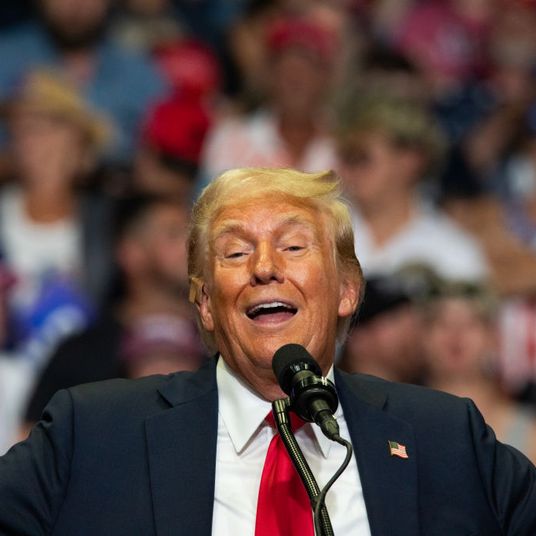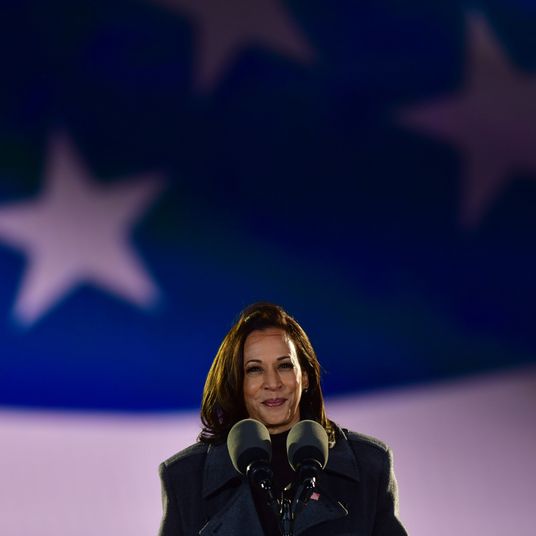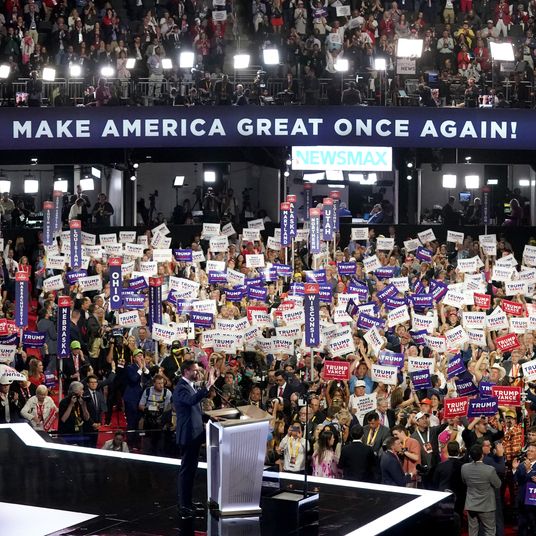
On Wednesday, Federal Reserve chairman Jerome Powell refused to declare victory over inflation. “The path forward is uncertain,” he said at an afternoon press conference following the central bank’s decision to keep interest rates steady. Yes, he said, things were getting better. Inflation was lower. The economy wasn’t about to fall off a cliff or lapse into another era of high inflation. The Fed’s Board of Governors — typically a pretty conservative lot — even predicted the central bank would cut interest rates three times next year, a minimum of 0.75 percent. Still, Powell said, it was too early to say “mission accomplished.”
That didn’t stop Wall Street from going absolutely apeshit. Since Powell stepped away from his press-conference podium yesterday, investors have been staging one of the biggest year-end rallies in decades, buying up anything and everything. The Dow Jones Industrial Average notched a new all-time high. Ten-year Treasury bond yields — typically a measure of economic health — zoomed below 4 percent, the lowest since July. (Bond yields are a mirror image of price, so the lower they are, the higher the demand.) As the investor class digested Powell’s statements, it concluded that inflation is no longer the threat it once was, and the party was back on.
This is, in effect, the so-called pivot the markets have breathlessly been calling for — and not getting, no matter how many times Powell has said so. As recently as two weeks ago, he was scolding Wall Street for getting ahead of itself and warned that the central bank might still hike rates up yet again. Nobody really believed him — the data on the economy was too good — and bond yields fell, fast. Why all this matters is due to what has happened since. When bond yields fall, there is a knock-on effect on credit markets, including mortgage and credit-card rates. In effect, the bond markets play a role in determining how much consumers pay to borrow money. You’d think that if inflation were so entrenched, such a pullback in borrowing costs would mean prices would spike up again. Instead, inflation actually kept falling in December, even as borrowing costs started to come down — at least according to the Federal Reserve Bank of Cleveland’s real-time price tracker.
But wait a second — weren’t we just talking about how bad the economy felt? People were spending less. Economists were predicting that the so-called “soft landing” — econspeak for taming inflation without inducing a recession — was a fantasy. Could it be the vibes had led us astray?
In fact, it looks like they had. It turns out there has been some deflation in the markets with the cost of eggs, gas, and insurance among the many prices that have been declining. In November, rents fell by the most in three years, according to Redfin. Mortgage rates fell to about 7 percent, down from 8 percent, which caused a spike in refinancing. This is coming as wages continue to rise. With a little less pressure on people’s income, it’s not a surprise that holiday spending is way up.
The upshot of all this is that the central bank will start sending interest rates down even further, and it’s probably not going to waste much time in doing so. In a Thursday-morning note, Goldman Sachs analysts predicted the Fed would “cut earlier and faster” — as many as five reductions to rates, or about 1.25 percent, over the course of the year. And that’s actually kind of conservative, as the market consensus is expecting the Fed to cut six times.
Should all this hold, it will end up being a remarkable end to 2023. Just about everyone predicted the economy would tip into a recession this year, and — after the failure of Silicon Valley Bank and a handful of other lenders — it seemed all but certain that was going to happen. For the foreseeable future, that kind of downturn now looks like the remotest of possibilities. “This is a massive paradigm shift on Wall Street, with the most aggressive rate-hiking cycle in decades coming to an end,” Adam Sarhan, founder of 50 Park Investments, told Bloomberg. “The Fed is no longer dealing with inflation as public enemy No. 1.”





























